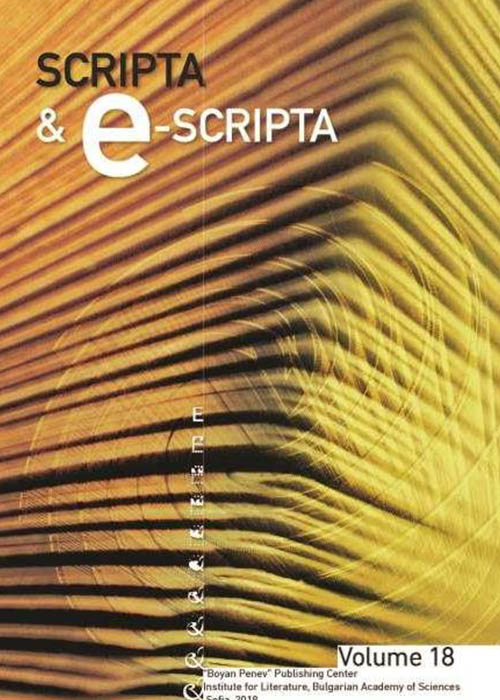Patria Athonensia and Отьчьствиѥ ст҃ыѩ горы: a Sixteenth-Century Slavonic Source about the Zographou Monastery

- Author(s): Mariyana Tsibranska-Kostova Ivan Biliarsky
- Subject(s): Language and Literature Studies //
-
Published by: Institute for Literature BAS

- Print ISSN: 1312-238X
- Summary/Abstract:
The goal of this article is to analyze an early 16th - century Slavonic copy of the Legend of how the Bulgarian Zographou Monastery on Mount Athos was founded. This text represents an integral part of the sacred history of the Holy Mountain, known under the title Πάτρια (Patria Athonensia). In the beginning of the 16th century (1508), hieromonk Gabriel, at that time notary of the Protaton Church at Karyai, translated into Slavonic of Serbian recension a cycle of mutually connected texts on the foundation of Holy Mountain and some of its monasteries, which he found in the Greek written tradition of the Hagiorite Patria. The analysis in this paper is focused on the most archaic South Slavonic copy with Gabriel’s translation in miscellany № 733 from the middle of the 16th century, which makes part of Kovačević’s collection, held in the Serbian National Library in Belgrade. The Legend about the foundation of the Zographou Monastery is analyzed in the light of the concepts of “cultural memory”, “spiritual identity“, and “historical tradition”. The authors express a deep gratitude to their Serbian colleagues Vlada Stanković and Tatjana Subotin-Golubović for the given opportunity to use the digital copy of the manuscript, as well as to Dmitrij Bulanin, whose new research Афон в древнерусской письменности до конца XVI в. (Словарь книжников и книжности Древней Руси. Вып.2, части 1–2. М., 2012, 429–763), appeared at the same time as the deposition of the current article, represents a solid base for further investigations.
Journal: Scripta & e-Scripta vol. 12, 2013
-
Page Range: 41-56
No. of Pages: 16
Language: English - LINK CEEOL: https://www.ceeol.com/search/article-detail?id=17979
-
Mariyana Tsibranska-KostovaProf., DSc. Institute for Bulgarian Language, Bulgarian Academy of Sciences, Sofia, BulgariaIvan BiliarskyProf., PhD Institute for Historical Studies, Bulgarian Academy of Sciences, Sofia, Bulgaria
-
SUBJECT: Language and Literature Studies //KEYWORDS:
-